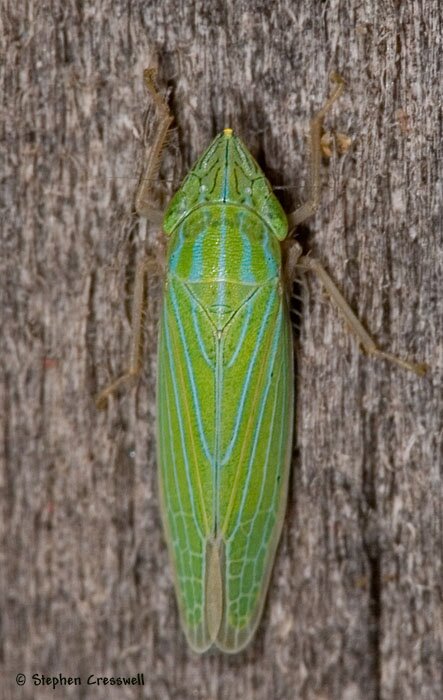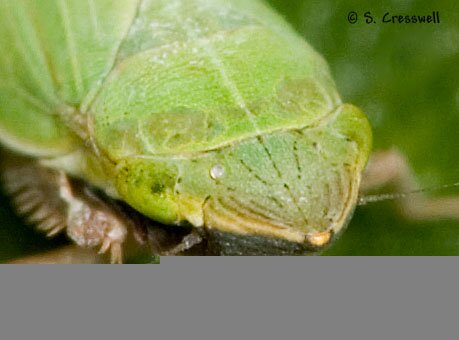
Family: Cicadellidae
Subfamily: Cicadellinae
Length: 5.5-9.0 mm
Leafhoppers in the genus Draeculacephala have an elongated, conical head. The vertex has a medial groove. The tegmen has a reticulate (net-like) pattern toward the rear.
We have photographed this species in West Virginia in June through November.

Color varies considerably in this species, with some individuals having bright blue veins toward the front, and others faded blue to whitish veins.
An aggressive collecting program in 45 West Virginia counties in 1978 and 1979, conducted by J.W. Begley and L. Butler, turned up these Draeculacephala species:
- Draeculacephala antica in 29 counties
- Draeculacephala mollipes in 19 counties
- Draeculacephala delongi in 3 counties
- Draeculacephala producta in 4 counties
- Draeculacephala portola in 14 counties
Mason and Yonke (1971) conducted life history studies of several Draeculacephala species in the laboratory. Typical in many ways was D. antica. The female of this species laid an average of 527 eggs in the leaf blade or leaf sheath, and the eggs hatched 8-9 days later. The entire process from the laying of the egg to the adult stage took 30 days. The average lifespan was about 100 days, but the most long-lived individual lived 184 days. Draeculacephala antica seems to have two generations per year. In the wild the species feeds on grasses, though Mason and Yonke used corn plants in their laboratory study.

The name of the genus means "Dragon head." The head comes to a point in Draeculacephala species, though in a few species the point is not quite so sharp.
The ocelli are on top the head, much closer to the compound eyes than to each other.


